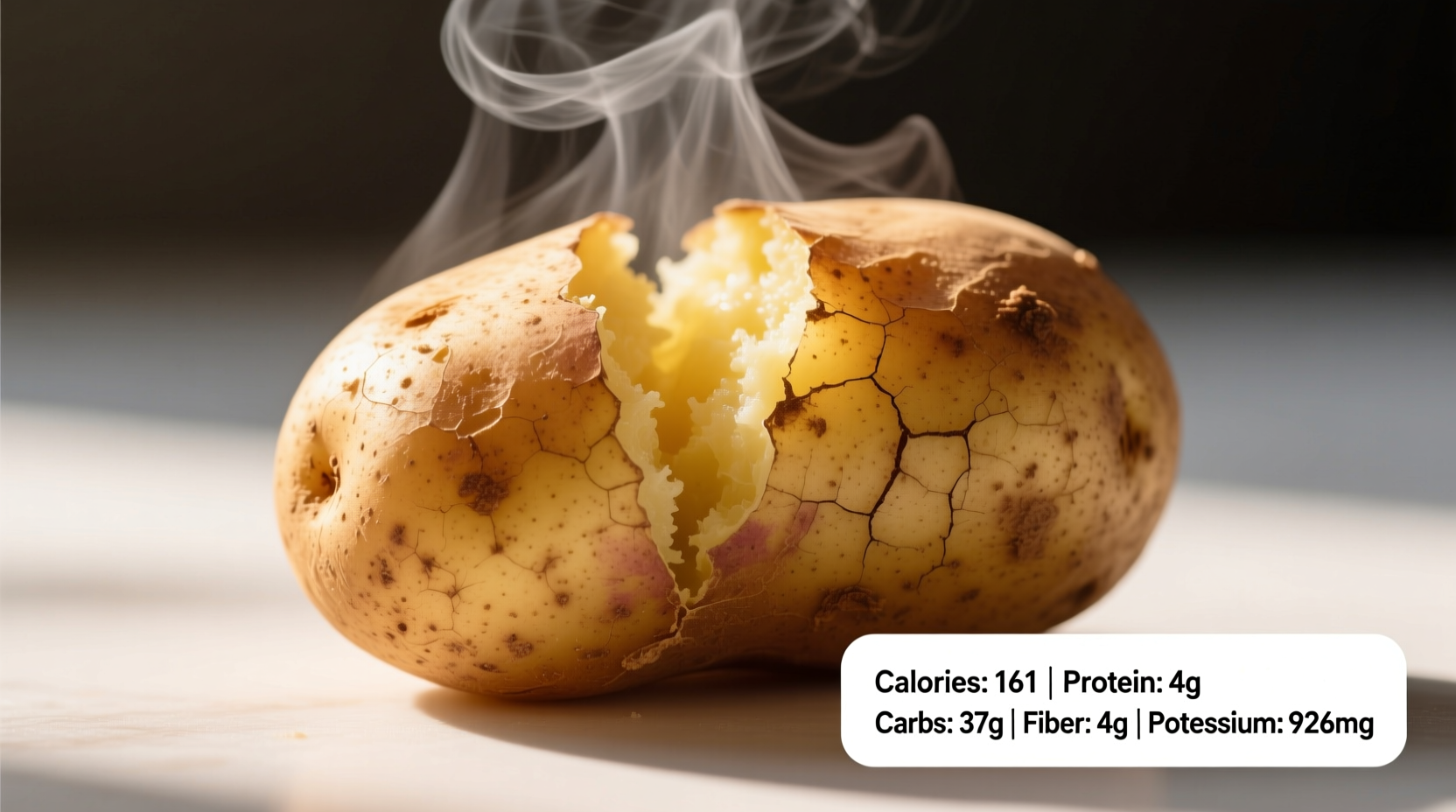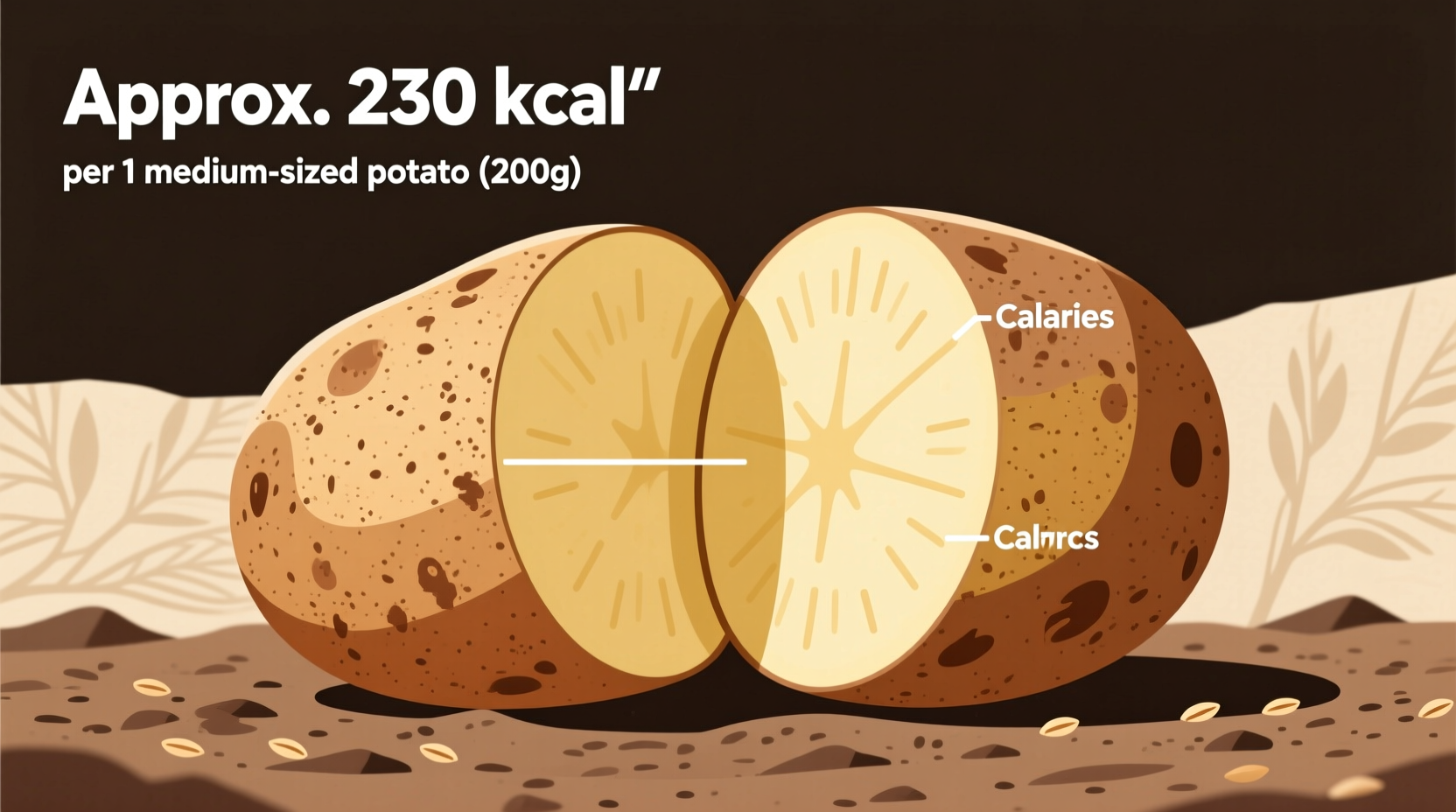Understanding Potato Portions and Their Caloric Impact
When tracking your daily nutrition, knowing exactly what constitutes a "large potato" and how preparation methods affect its caloric value is essential. Let's break down the facts you need to make informed dietary choices.
What Exactly Qualifies as a Large Potato?
The USDA defines a large potato as weighing approximately 369 grams (about 12-16 ounces) before cooking. This standard measurement helps nutritionists and health professionals provide consistent dietary guidance. Potatoes of this size typically measure 3-4.25 inches in diameter.
| Size Classification | Weight (grams) | Diameter | Calories (Baked) |
|---|---|---|---|
| Small | 138g | 1.5-2.25 inches | 109 |
| Medium | 173g | 2.5-3.25 inches | 137 |
| Large | 369g | 3-4.25 inches | 291 |
| Jumbo | 448g | 4.5+ inches | 354 |
Complete Nutritional Profile of a Large Baked Potato
Beyond calories, a large baked potato with skin delivers impressive nutritional value. According to USDA FoodData Central, one large potato provides:
- Carbohydrates: 63g (21% of daily value)
- Fiber: 6.3g (25% of daily value)
- Protein: 8g
- Potassium: 1600mg (46% of daily value)
- Vitamin C: 72mg (80% of daily value)
- Vitamin B6: 0.9mg (53% of daily value)
- Magnesium: 85mg (20% of daily value)
This nutritional powerhouse contains virtually no fat and no sodium naturally, making it an excellent base for healthy meals when prepared properly.

How Cooking Methods Dramatically Change Calorie Content
The way you prepare your potato significantly impacts its final calorie count. While the potato itself remains the same, added ingredients and cooking techniques can transform this humble vegetable:
| Preparation Method | Calories (Large Potato) | Additional Calories from Toppings |
|---|---|---|
| Baked with skin | 291 | N/A |
| Boiled | 274 | N/A |
| Steamed | 274 | N/A |
| Mashed (with milk) | 328 | +37 from preparation |
| French fries | 442 | +151 from oil absorption |
As Antonio Rodriguez, our culinary expert explains: "The potato itself isn't the issue—it's how we prepare it. Baking or boiling preserves the natural nutritional benefits, while frying adds significant fat content through oil absorption. Even healthy toppings like olive oil or butter add calories that accumulate quickly."
Context Matters: When Potato Calories Support Health Goals
Understanding the context in which you consume potatoes helps determine their impact on your diet. Potatoes provide complex carbohydrates that offer sustained energy release, making them valuable for:
- Athletes needing carbohydrate loading before endurance events
- Active individuals requiring sustained energy throughout the day
- People following balanced diets where complex carbs form 45-65% of calories
However, for those managing blood sugar levels or following low-carb diets, portion control becomes essential. The glycemic index of potatoes varies by type and preparation—boiled potatoes have a lower glycemic index than mashed or fried versions.
Practical Tips for Incorporating Potatoes into Your Diet
Maximize the nutritional benefits while managing calorie intake with these evidence-based strategies:
- Always keep the skin on—nearly half the fiber and many nutrients reside just beneath the skin
- Cool cooked potatoes before eating to increase resistant starch content by up to 28%
- Pair with protein and healthy fats to slow digestion and prevent blood sugar spikes
- Measure portions—use a kitchen scale until you can visually estimate a large potato
- Choose baking or boiling over frying for minimal additional calories
Historical Context: Potatoes in Modern Diets
Potato consumption patterns have evolved significantly over the past century. According to USDA Economic Research Service data, Americans consumed approximately 114 pounds of potatoes per person annually in the 1970s. By 2020, that figure had decreased to about 49 pounds per person as dietary preferences shifted.
This decline correlates with increased awareness of carbohydrate quality and preparation methods. The modern approach focuses on whole, minimally processed potatoes rather than heavily processed forms like french fries and chips, which account for over 70% of potato consumption in the United States according to CDC reports.
Addressing Common Misconceptions About Potato Nutrition
Despite their nutritional benefits, potatoes often face unwarranted criticism in popular diet culture. Research published in the American Journal of Clinical Nutrition shows that when prepared healthily, potatoes can be part of effective weight management strategies.
The key distinction lies between whole potatoes and processed potato products. Whole potatoes provide satiating fiber and nutrients, while processed versions often contain added fats, salts, and sugars that transform their nutritional profile.











 浙公网安备
33010002000092号
浙公网安备
33010002000092号 浙B2-20120091-4
浙B2-20120091-4